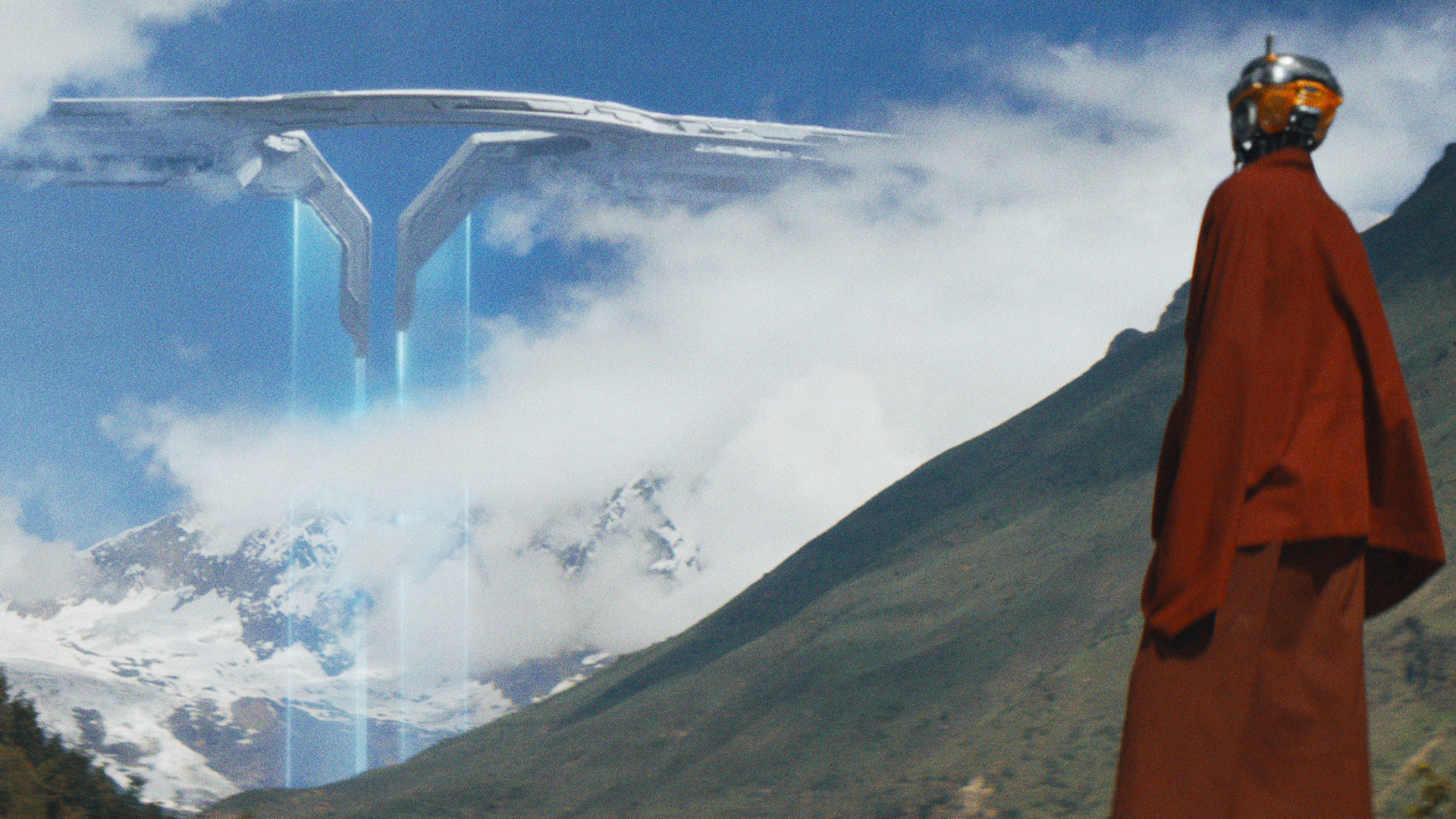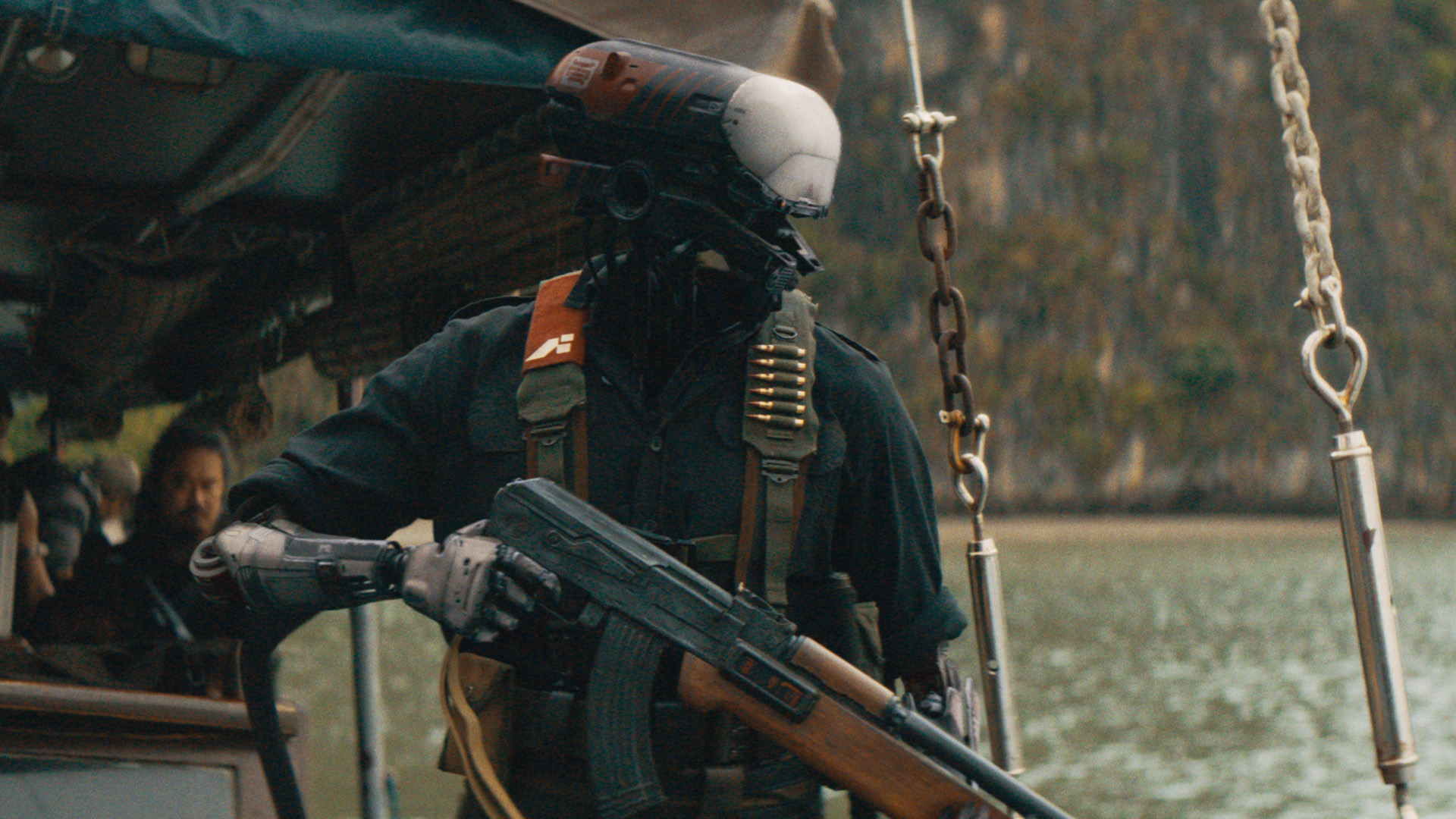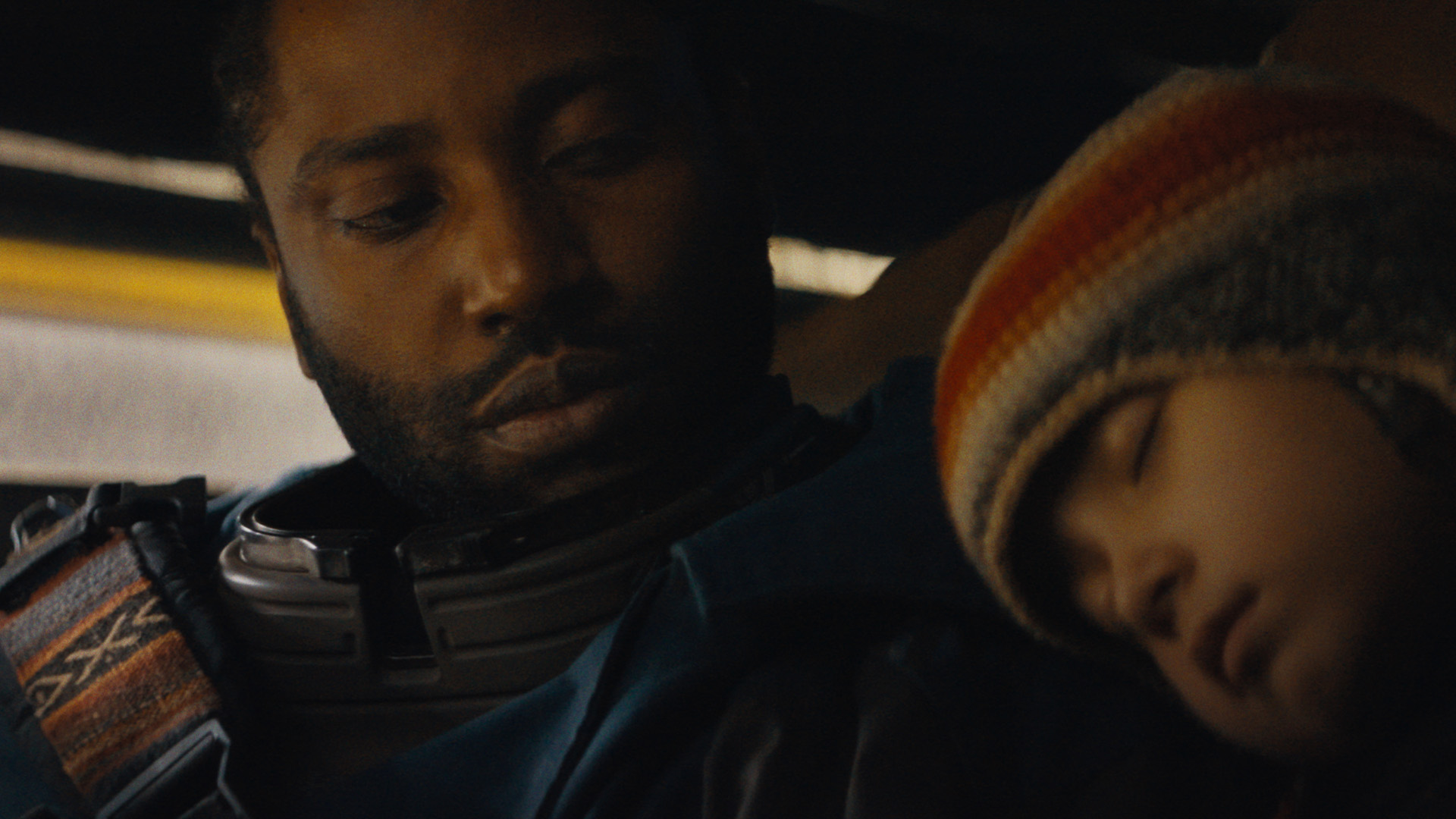The Creator’s sci-fi spectacle might impress, but it’s a messy slog

It’s humanity vs AI in The Creator, the new futuristic sci-fi from director Gareth Edwards (Rogue One). Sadly, the rest of the film doesn’t live up to Edwards’ massive gift for visuals, writes Tony Stamp.
The Creator (2023)
There’s no denying that The Creator contains some striking imagery. Bringing the same much-commented-on sense of scope that he did to Godzilla and Rogue One, Gareth Edwards sets vast futuristic vehicles against even vaster landscapes, and it’s hard not to be impressed with the sci-fi spectacle of it all. The film itself though is a slog, overly grim and sloppily assembled, a whiff no matter how good it looks.
Edwards has been quiet since his 2016 Star War, a movie plagued by rumours that it had been taken from him and finished by Tony Gilroy (who would go on to helm the excellent Andor). According to a recent profile he was attempting to extricate himself from “the machine” of big-budget filmmaking, and bring the intimate approach of his first feature Monsters to a more modestly-budgeted feature (modest when compared to his last two behemoths, at least).
Part of that approach involved shooting on location, which winds up doing a lot of heavy lifting in The Creator. Maybe it’s a sign of the times that just seeing people interact with real environments is so enjoyable, but it must be said Edwards shoots the heck out of all those hilltops and jungles.
Speaking of scenery, a healthy chunk of this movie involves Asian people and Asian-coded robots being blown up in terrain that looks a lot like Vietnam (according to the movie it’s ‘New Asia’, an excuse to mash together Japanese language with South East Asian vistas, Tibetan robot monks and other romanticised notions).
In the world of the film, AI has been outlawed in the West, but flourishes in the East, provoking an ongoing conflict. Edwards clearly means to evoke a certain longrunning war (and more specifically, Apocalypse Now), and there’s never any doubt which side he’s on—the bad guys are specifically referred to as ‘Americans’—but as a metaphor it gets into very tricky territory, and after seeing a certain number of villages destroyed in massive explosions as children and the elderly are terrorised, it all starts to feel pretty distasteful.

Edwards got his start in visual effects, and they’re consistently fantastic and seamlessly integrated. Once again he’s succeeded at bringing a new world to life in incredibly rich detail. Also true to form, he flubs the emotional component. But boy does he try.
Some suspiciously Nolan-y flashbacks haunt John David Washington’s Joshua, involving his dead wife (again, super Nolan-y). The fellow Brit director is likewise invoked through some impressionistic editing (there’s also a lot of straight-up sloppy editing), as is Neil Blomkamp, who’s possibly owed royalties for the robot designs here.

After a botched mission in New Asia, Washington is saddled with an AI child, a form of life he doesn’t consider to be alive. Gruff soldier with cute kid: you can see where this is going. And that’s fine, but not if the movie fails to sell you on their connection, and it does (despite a fine performance from Madeleine Yuna Voyles as the gifted youngster).
It’s hard to get too invested when the film raises, then fails to answer, so many questions. Chunks of crucial exposition are delivered offscreen, by characters who should not know the things they’re saying. Multiple plot threads are left unresolved.
Why does the film start with fifties-style newsreels about AI when the film is set in 2065? Why are the Americans using AI if they’re the ones who outlawed it? Why does British actor Gemma Chan have an Australian accent? Why does an unexpected Radiohead song get such a huge tee-up only to just stop?
I have no idea, and sadly, I don’t think Edwards does either. His gift for visuals is so massive you’ll be wowed from moment to moment, but otherwise this is a mess.




















